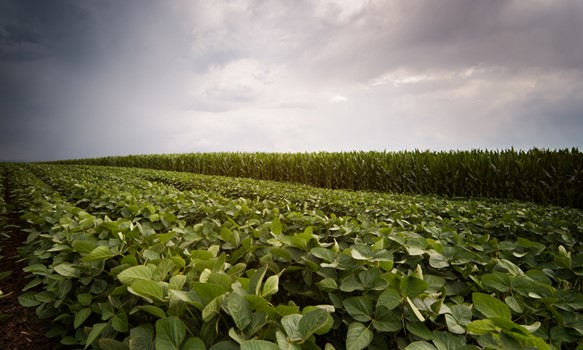Preparing to meet with your lender to renew your operating loan? One important focus area for the 2023 planting season is your inputs — seed, fertilizer, herbicide, fuel and other essentials for your crops. According to the Farm Bureau, farm production costs increased by 12% in 2021 from the 2020 season. * Looking ahead, farmers and ag experts expect higher expenses for the 2023 growing season.
The big difference between this year and last? Many farmers had locked in their contracts for fertilizer before the price hikes and were rewarded with a cushion. This year, however, that cushion is gone, and the supply chain disruptions and elevated prices haven’t backed down. With inputs taking a larger piece of the pie, finding ways to eliminate waste and reduce consumption can make a difference in your margins.
Before you meet with your lender to renew your ag operating loan, these are some of the short- and long-term strategies you can discuss with your ag lender to bolster your margin.
Crop margin protection
Unfortunately, the deadline for purchasing crop margin insurance has passed for the 2023 growing season (Sept. 30, 2022). But this year, producers were definitely investigating federally backed crop margin insurance as a way to build peace of mind. Based on county yields, it protects Minnesota farmers who grow commodity crops of corn, soybeans and wheat.
Want to learn more? Talk to a Minnwest Insurance Agent about whether future year crop margin protection makes sense for your operation.
Expand your supply network
Buying inputs from multiple suppliers instead of a single supplier doesn’t necessarily result in pricing benefits, but it can expand access when supplies are short and keep your operation moving forward. Having contracts and relationships with more than one supplier can help you gather what you need to get through a shortage. If anything, collecting bids from multiple suppliers can unlock new opportunities to input savings.
Deploy your resources
Farmers are resourceful, and now’s a better time than ever to consider cost-effective alternatives — or opportunities within your reach — to reduce input expenses. Applying animal manure provides an excellent source of nutrients for corn and soybeans and a hedge against fertilizer pricing. Of course, it’s not a one-and-done trade, because you’ll need to balance out the variability of nutrients with the manure. But if you have access to a ready source, deploying it can be a part of your strategy to reduce input costs in 2023. Do you have extra space available? Consider using it to store reserve supplies when you can lock in an attractive price for certain inputs.
Keep an eye on progress
Agriculture practices are always evolving, so keeping abreast of technologies and farming practices that maximize your resources (and reduce your input needs) will pay off in the long run. Precision ag technology that monitors crop progress, soil health and other markers allows you to deploy fertilizer and weed control where it’s needed.
Research shows that cutting back on tilling can save fuel and fertilizer consumption. Because results can vary based on soil type, rainfall and other climate differences between counties, it’s important to pore over the benchmarking data on Finbin to identify whether a new tilling method would maximize your savings.
Expertise you can trust
When it comes to managing cash flow and finding the right balance, you need a perspective you can trust. At Minnwest Bank, our agri-business bankers have gained the trust of growers across Minnesota. That’s because they’re also farmers and producers who live and work in your community. We know what’s at stake and we have the resources to help you find solutions.
Get expertise you can trust to help your farm thrive. Make an appointment with a Minnwest ag banker today!
* Analyzing Farm Inputs: The Cost to Farm Keeps Rising | The Farm Bureau


